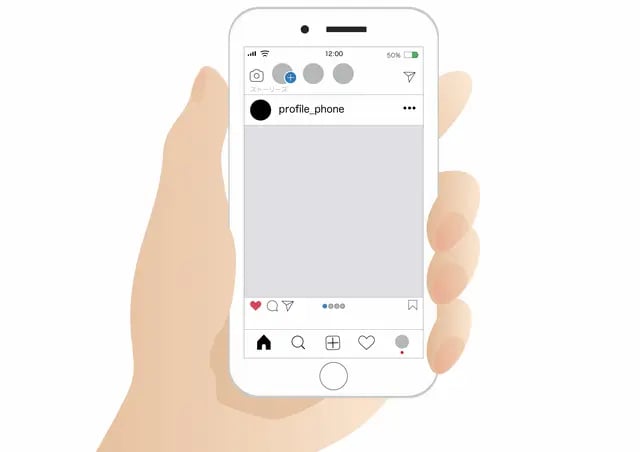Facebook ads can be placed from a few hundred yen per day, and are characterized by high-precision targeting unique to real-name registration SNS. In this article, we will explain the features and mechanisms of Facebook ads and how to place them.Facebook is a huge platform with 1.93 billion daily active users as of February 2022.
With 26 million users in Japan, it boasts the largest number of users, so you can reach a large number of users by placing ads on Facebook.
If you are planning to post Facebook ads or are unsure about which advertising platform to choose, please take a look.

Table of Contents
- What is Facebook Ads?
- Features of Facebook Ads
- Basic Structure of Facebook Ads
- How Facebook Ads Work and Billing
- Facebook ad placement and ad formats
- What to do before posting Facebook ads
- Steps for posting Facebook ads
- How do you measure the effectiveness of Facebook ads?
- Understand the characteristics of Facebook advertising and use it effectively in your business
What is Facebook Ads?

Facebook is a huge SNS platform with 1.93 billion users per day and 2.9 billion users per month as of March 2022. Facebook basically has the feature of being registered with a real name, and many companies use Facebook advertising.
If you use Facebook, you’ve probably seen ads that blend into your posts in your news feed. Also, I think that there is also an experience that the product searched on Amazon was displayed on Facebook. These are all Facebook ads.
Facebook ads can be distributed not only to Facebook, but also to various media and mobile apps (called Audience Network) affiliated with Instagram and Facebook . From among these, we will select (target) users who are suitable for the purpose and content of the advertisement and distribute the advertisement.
Features of Facebook Ads
Features of Facebook Ads:
- high targeting accuracy
- Ad delivery is possible from a small amount
- Distributable to Meta media, etc.
- Simple procedure for advertising
- Cost strategy can be set according to needs
- Easy to measure ad effectiveness
I will explain each feature in detail.
1. High targeting accuracy
The biggest feature of Facebook ads is their high targeting accuracy.
Unlike other SNS, Facebook requires you to register with your real name. Our strength is that we can deliver ads based on accurate profile information such as age, place of residence, and place of work, as well as the user’s real name .
You can also set up Lookalike Audiences in Facebook Ads. A similar audience is a function that allows you to target users with similar attributes and behavior histories to your existing customers, expanding your reach to users who are interested in your company’s products and services.
2. Ad delivery is possible from a small amount
Facebook ads can be delivered from a few hundred yen per day, so it can be said that even beginners can work on ads with less risk. It is possible to start advertising with a small amount at first and increase the budget while checking the effect to aim for a large effect.
In addition, Facebook ads tend to have a lower CPC (cost per click) than listing ads. Facebook ads are highly targeted and tend to have higher click-through rates than listing ads with the same budget, keeping your CPC at a lower level.
3. Can be distributed to Meta’s media, etc.
Facebook Ads can be delivered across a variety of media operated by Meta (formerly Facebook).
The main delivery destinations are as follows.
- You can connect with Facebook
friends and family and share and send information and news related to you. - Instagram
A platform that mainly posts photos and videos among SNS - Messenger
A messaging app that makes it easy for Facebook users to keep in touch with each other - Mechanism for distributing ads to mobile apps and mobile sites affiliated with the audience network Facebook
By displaying advertisements in these multiple media, it becomes possible to approach people other than Facebook users . The fourth, Audience Network, is explained in detail in the following article.
4.Simple procedure for placing advertisements
Posting Facebook ads can be done easily by simply following the displayed instructions. Specifically, enter the purpose and budget of the advertisement, targeting, delivery period, images and text in order. We offer a variety of ad formats to suit your advertising goals.
5. Cost strategy can be set according to needs
Facebook Ads has a mechanism to control the bid price of the ad auction. With this mechanism, advertisers can set cost strategies such as “I want to maintain a certain bid price” or “I want to optimize the sales obtained against the advertising cost”.
6. Easy to measure advertising effectiveness
Effectiveness measurement is an essential process for maximizing cost-effectiveness in ad distribution. Likes for the Facebook advertising platform There is no need to prepare a separate tool for measuring effectiveness, as it is already equipped with a function that allows you to check quantitative figures such as the number of users, the number of inquiries on your company’s website, and the number of app downloads.
Basic Structure of Facebook Ads
When setting up Facebook ads, it is necessary to understand the three-layer structure of “campaigns”, “ad sets” and “ads” .
- [Campaign] A framework corresponding to a purpose such as “I want to increase access to my website” or “I want to increase the number of Facebook page fans” is called a “campaign”. Set up one campaign for one purpose.
- [Ad set] In the ad set, the budget, delivery schedule, selection of delivery destinations (targeting), etc. are set. You can have multiple ad sets under your campaign.
- [Advertisement] Advertisement is the place where you set the content (text, image, video) of the advertisement that is actually delivered. You can have multiple ads under your ad set. In addition, by delivering multiple advertisements at the same time, it is possible to compare which advertisement is the most effective.
How Facebook Ads Work and Billing
Facebook ads are basically an auction format .
An ad auction is always held at the timing of displaying an ad to a user, and the ad that is judged to be the most suitable from among the nominated ads is selected and displayed.
The ad auction process uses algorithms to select ads that benefit both users and advertisers. Specifically, the overall value of each ad is calculated from ‘bid price’, ‘estimated action rate’, and ‘ad quality’, and the ad with the highest value is displayed.
Also, with Facebook Ads, you can choose the timing of billing from the following two methods.
- Cost per click (CPC)
- Pay for impressions (CPM: Cost Per Mille, Mille means 1,000 in French)
pay per click
Pay-per-click is a method of charging when an ad is clicked. No matter how many times a user sees your ad, you won’t be charged if it doesn’t get clicked.
Billing for impressions
Pay-per-thousand impressions are billed when an ad is shown to a user 1,000 times. For impressions, clicks and likes You will be charged for the number of times your ad is displayed, regardless of the number of
Pros and cons of pay-per-click and pay-per-impression
| MERIT | DEMERIT | |
|---|---|---|
| pay per click | You will not be charged for multiple impressions until the user clicks | Likes due to light feelings! but will be charged |
| Billing for impressions | You can gain recognition by repeating the display | Budget may be consumed without effect |
When you advertise for the first time, it is a good idea to pay per click to see how it goes. After running a few ads, you can see the difference in click-through rate between ads.
Consider changing the billing method for ads with a high click-through rate to pay-per-impressions to check the effectiveness of your ads while keeping distribution costs down.
Facebook ad placement and ad formats

Next, let’s take a look at where Facebook ads appear and the ad formats. Knowing these Facebook ad specs will help you create creatives more smoothly.
Place of publication
Here’s where your Facebook ads will appear:
| DISTRIBUTION MEDIUM | COMPATIBLE TERMINAL | MAIN DISTRIBUTION |
|---|---|---|
| computer |
|
|
| smartphone |
|
|
| smartphone |
|
|
| Messenger | smartphone |
|
| audience network | smartphone |
|
The delivery surface is the inventory in which the ad is actually displayed. The delivery aspect varies depending on the medium where the advertisement is displayed, but the following types are particularly common, so remember them.
- Facebook News Feed
Advertisements are placed within the News Feed, which displays the latest statuses of you and your friends, as well as comments on them. - Facebook right-side ad
space - Advertisements are displayed in the photo/video list that is displayed when you open the Instagram feed Instagram app.
- Instagram Discover Tab
Place ads in the Discover tab that appears when you tap the magnifying glass mark on Instagram. - Stories
Post ads in Stories where you can show your followers photos and videos for 24 hours - In-stream video
Place video ads in videos published by high-profile publishers
ad format
There are four types of ad formats on Facebook:
- Image ads
An ad format that allows one image to be displayed for each ad. - Video Ads
An ad format that allows one video to be displayed for one ad. - Ad formats that allow 2-10 images or videos per ad per carousel ad
- Ad formats that can showcase multiple products and services, such as collection ad catalogs
- An ad format that displays ads in full screen when tapped on Instant Experience mobile devices
It is important to operate with an understanding of what kind of effect can be obtained for each type of ad format . Make sure you have a clear purpose in advance, such as reach acquisition or branding.
What to do before posting Facebook ads
Here are a few things to consider before running Facebook ads:
- Ad creative creation
- Business manager settings
I will explain each point in detail.
Ad creative creation
First, prepare the core creative of the ad. Ad creative performance influences “ad quality”, which is important in ad auctions. Make it easy to see, read, and understand.
It is important to keep the placement of text within the image to a minimum. If the text area in the image exceeds 20%, your ad may not perform well.
Also, even with the same ad format, different delivery aspects will result in different creative recommendations, so be careful. The recommended size and appropriate number of characters for Facebook ads are explained in detail in the following article.
Business manager settings
Facebook Business Manager is a centralized management feature for marketing and advertising activities. In addition to advertising, you can also manage access to Facebook pages, accounts, and members.
New ad accounts can be created from Business Manager, and different permissions can be set for each member, such as team members and external partners (advertising agencies, etc.) in advertising operations.
Steps for posting Facebook ads

There are three steps to creating Facebook ads.
| POSTING STEP | SETTINGS |
|---|---|
| 1. Campaign settings |
|
| 2. Ad set configuration |
|
| 3. Advertising settings |
|
I would like to highlight three points that are of particular importance.
- Campaign objective
- Target setting
- cost setting
Campaign objective
When you run a Facebook ad, first select your campaign objective.
The objectives you can choose for Facebook ads are:
| PURCHASING PROCESS | THE PURPOSE | BUSINESS GOALS |
|---|---|---|
| cognition | branding | Increase brand and product awareness |
| reach | Display ads to a large number of users | |
| examination | traffic | Direct users to link from Facebook |
| engagement | nice! Reach people who are likely to share | |
| app install | Drive users to the app store | |
| Increase the number of video views | Engage users with video content | |
| lead acquisition | Collect information about users who are interested in our products | |
| message | Communicate with potential and existing customers | |
| action | conversion | Encourage specific actions on Facebook |
| Catalog sales | Increase sales by listing catalog items | |
| Increase in store visits | Publicize the location of the physical store to nearby users |
The setting items and format may change depending on the selected purpose, so be sure to understand the differences between them.
Target setting
Facebook advertising is a powerful advertising tool that can reach a large number of users. Targeting is performed to narrow down the users who are likely to be interested in the advertisement from a wide range of approach destinations. The basic items available for targeting are:
【region】
Target your ads based on the user’s location. For example, you can specify country, state, province, city, and zip code. A region name (eg Europe) can also be set. You can also make the following settings.
- people living in this area
- People who have been in the area recently
- who live in or have recently been in the area
- people traveling
【age】
Set the target age group for your ad. You can set it in the range of 13 years old to 65 years old or more.
【sex】
Set the target gender for your ad. You can select “Male”, “Female” or “All”.
【language】
You can target your ads to users who speak specific languages. For example, you can narrow down by English (British, American, all selectable), French, Japanese, etc.
【connection】
You can set “People who liked the page”, “People who used your app”, “People who responded to the event”, etc. with Facebook-specific functions.
[User demographic]
You can use demographic characteristics, educational background, work, income, family status, etc. for targeting.
[interests and interests]
Users’ wide-ranging interests and interests (sports, movies, travel, etc.) can be used for targeting.
[Behavior]
User behavior, such as Facebook payments, campus game play, whether emails such as AOL or Apple are used, device OS, browser used, Facebook use device (smartphone, etc.), frequent overseas travellers, etc. can be used for targeting.
If you would like to know more about targeting settings for Facebook ads, please check the following page of this media.
cost setting
With Facebook ads, an ad auction is held each time an ad is displayed to determine which ad will be delivered from among many advertisers.
At that time, the “bid price” is one of the factors that determine the winner of the auction . There is no meaning if the advertisement is not displayed, but a function called cost control is provided to deliver advertisements with improved cost effectiveness.
If you do not use cost control, the unit price of events (reach, like acquisition, lead acquisition, video playback, etc.) according to the purpose of the advertisement will be suppressed, assuming that the budget entered in the advertisement settings will be used. to serve ads.
From here, we will explain the following three typical types of cost control.
- Average target cost per cap
- Bid limit
- Target unit price
1. Average target achievement unit price upper limitThere is no limit on the unit price of the event according to the purpose of the advertisement, and we will also bid at a high unit price. You can set an upper limit on the average unit price from multiple bids at the same time. It manages to acquire events with low unit prices as much as possible and keep the average unit price lower than the setting.
2. Maximum bid price
It sets a limit on the unit price of the event according to the purpose of the advertisement, and does not bid on the event whose unit price is higher than the upper limit setting. Control your CPA (Cost Per Action) by not bidding on unexpectedly high unit prices.
3. Target unit price
It operates so that the average unit price of the event according to the purpose of the advertisement is about plus or minus 10% of the specified value. It is used when you want to know the effect at the unit price specified in the advertising effect verification. Sufficient delivery data is required for cost control to be effective. Please be aware that if you have a small budget and few deliveries, it may not work as intended.
How do you measure the effectiveness of Facebook ads?
After delivering Facebook ads, be sure to check the effect. By using Ads Manager, you can check various metrics such as the number of impressions and clicks on your ads.
If you want to know the detailed explanation of each indicator, please check the following article on this media.
Also, by using the Facebook pixel, it is possible to measure the effect after transitioning from the Facebook advertisement to the external page.
Understand the characteristics of cadvertising and use it effectively in your business
I hope you have understood the big picture of Facebook advertising.
By actually operating Facebook ads, we will accumulate know-how that matches each business. You can manage your Facebook ads (publishing and measuring effectiveness) in-house or outsource them to an advertising agency. Even when requesting an agency, it is better to understand the overall picture of Facebook ads and the meaning of each indicator for measuring effectiveness, so that you can operate efficiently and sustainably.
It is also recommended to learn about success stories and learn from them. Get a feel for the type and scale of your business, its purpose, ad creatives, and the results you’ve achieved from success stories, then start working on your own Facebook ads.
